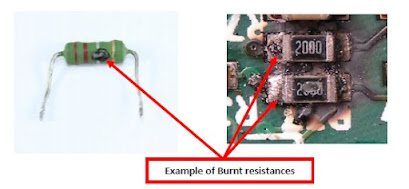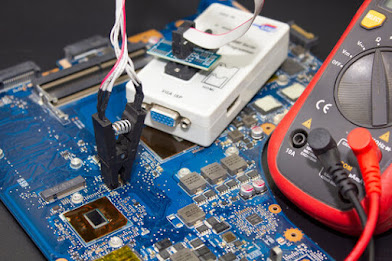Ethernet Cables Types: Cat 3, 5, 5e, 6, 6a, 7, 8 Wires Explained
In this networking tutorial, you will learn:
- What are Ethernet Cables?
- Ethernet cable Categories
- Type of Cables:
- Types of Shielded Ethernet Cables:
Ethernet Cable Categories
There are many Ethernet cable options available, and each one of them has its unique purpose and use. Therefore, It is important to understand each cable and its application if you want to acquire in-depth knowledge about the types of Ethernet cables. You need to choose the higher quality cable, which will be stronger, faster, and a better fit for your specific needs.
However, depending on your hardware, you can select your below-given ethernet cabling category.
Category-3
Cat3 cable is an earlier generation of cable, which supports a maximum frequency of 16 MHz. This cable may have 2, 3, or 4 copper pairs. Cat3 type of Ethernet cable is still used for two-line telephone systems and 10BASE-T networks. It is also used for alarm system installation or similar kinds of applications.
Category-5
These cables are slower compared to modern-day hardware requirements. So, you should use this type of Cable only if you have older hardware that demands outdated hardware.
Category-5e
Cat5e is one of the most popular cabling types of an ethernet cable used for deployments because of its ability to support Gigabit speeds at a cost-effective price.
Cat 5e can support up to 1000 Mbps speeds, which is flexible enough for small space installations. Therefore, it is widely used in residential areas. Cat5e is one of the least expensive cabling options available in the market.
Category-6
Cat6 cabling support up to 10 Gbps and frequencies of up to 250 MHz. These types of cables are more tightly twisted and feature two or more twists per centimeter. It only supports 37-55 meters when transmitting 10 Gbps speeds.

Category-6a:
Cat6a ethernet cable supports bandwidth frequencies of up to 500 MHz. Cat6a cabling is thicker compared to Cat6, making it less flexible. That is why it is more suited for industrial environments at a lower price point.
Category-7:
Cat7 has the ability to transmit up to 40 Gb at 50 meters and 100 Gb at 15 meters. This type of ethernet cable offers extensive shielding to decrease signal attenuation. It is relatively stiff in comparison to previous generations of cabling.
Cat7 type of Cable is suited for use in Datacenters and large enterprise networks. However, Cat7 has not been approved as a cable standard for telecommunications.
Category-8:
Category 8 cable is designed for operations of up to 2000 MHz. CAT8 cables work with 25/40GBASE-T Gigabit Ethernet; this reduces power consumption and is designed for bandwidth-intensive data center applications.
This type of Cable is ideal to use where the distances between units are short. CAT8 cables are backward compatible with previous Categories of ethernet cables.
Cat Types:
| Cable Type | Shielding | Maximum Frequency | Max Data Rate | Speed |
|---|---|---|---|---|
| Cat 3 | No | 16Mhz | 10Mbps | |
| Cat 5 | No | 100MHz | 100 Mbps | 100Mbps |
| Cat 5e | No | 100MHz | 1,000 Mbps / 1 Gbps | 1Gbps |
| Cat 6 | Sometimes | 250Mhz | 1,000 Mbps / 1 Gbps | 1Gbps |
| Cat 6a | Sometimes | 500MHz | 10,000 Mbps / 10 Gbps | 10Gbps |
| Cat 7 | Yes | 600Mhz | 40,000 Mbps/ 40 Gbps | 10Gbps |
| Cat 8 | Yes | 2GHz | 25 Gbps or 40 Gbps | 40Gbps |
Type of Cables:
Fiber-optic cabling:

Fiber optic cables mostly consist of a center glass, and different layers of protective materials surround it. Fiber-optic cabling transmits light in place of electronic signals, which removes the issue of electrical interference. This makes it an ideal selection for the environments that contain a large amount of electrical interference.
This type of network cable offers an ability to transmit signals over longer distances. It also provides the ability to carry information at faster space.
Two types of fiber-optic cables are:
- Single-mode fiber (SMF)–This type of fiber optic cable uses only a single ray of light to carry data. Used for larger distance wiring.
- Multi-mode fiber (MMF)–This type of fiber-optic uses multiple rays of light to carry data. Less expensive than SMF.
Four types of connectors in network that are mostly used for fiber optic cable are:
- ST (Straight-tip Connector)
- SC (Subscriber Connector)
- FC (Fiber Channel)
- LC (Lucent Connector)
Coaxial cabling:

Coaxial Cable is a standard for 10 Mbps Ethernet cables. These types of cables consist of an inner copper wire cover with insulation and another shielding.
It has a plastic layer that offers insulation between the draided metal shield and center conductor. Coaxial cabling has a single copper conductor in its center.
Types of Coaxial Cable are 1) RG58 2) RG8 3) RG6 4) RG59
Twisted-pair cabling:

Twisted-Pair Cabling is a type of cabling in with pairs of wires are twisted together to stop electromagnetic interference (EMI) from other wire pairs.
Two types of twisted pair cables are 1) Unshielded Twisted Pari 2) Shielded Twisted pair
Types of Shielded Ethernet Cables:
Here are some important Shielded Ethernet Cables
| Cable Name | Full Form | Description |
|---|---|---|
| F/UTP | Foiled/Unshielded Twisted Pair | This type of Cable will have a foil shield which can be wrapped around unshielded twisted pairs. It is commonly used in fast ethernet deployments. |
| S/UTP | Braided/Unshielded Twisted Pair (S/UTP) Cable | It will cover with a braided shield around unshielded twisted pairs. |
| S/FTP | Braided Shielding/Foiled Twisted Pair | In this type of shield ethernet cable, each twisted pair is enveloped covered with foil. |
| SF/UTP | Braided Shielding+Foil/Unshielded Twisted Pairs | This cable braid has a cover around a foil wrap that encloses unshielded twisted pairs. |
| F/FTP | Foiled/Foiled Twisted Pair | This type of FTP cable encloses all copper pairs in foil. |
| U/FTP | Unshielded/Foiled Twisted Pairs | This cable only envelopes the twisted pairs in foil. |
| U/UTP | Unshielded/Unshielded Twisted Pair. | In this type of cable, no sheathing is used. Standard Cat5e is a common cable example of U/UTP cables. |
Summary
What are the different Ethernet categories?
Different types of Ethernet Categories are: Cat 3, 5, 5e, Cat 6, 6a, 7, and Cat 8 that are widely used worldwide.
What are the 3 types of Ethernet cables?
Three main types of Ethernet cables are:
- Fiber-optic cable
- Coaxial cable
- Twisted-pair cable
What are the types of Shielded Ethernet Cables?
Different types of shielded ethernet cables are: F/UTP, S/UTP, S/FTP, SF/UTP, F/FTP, U/FTP, and U/UTP that are widely used worldwide.






Comments
Post a Comment